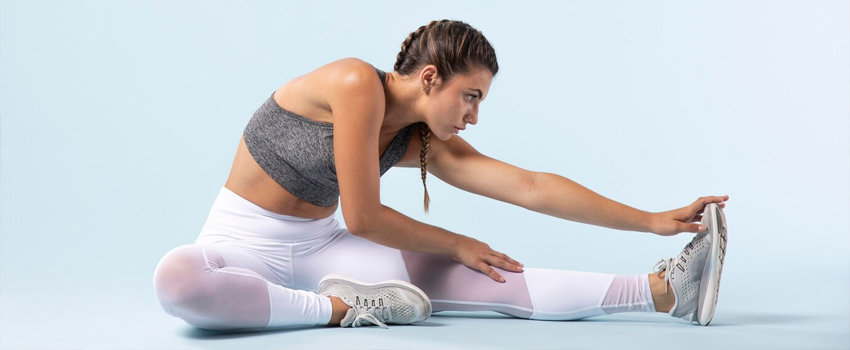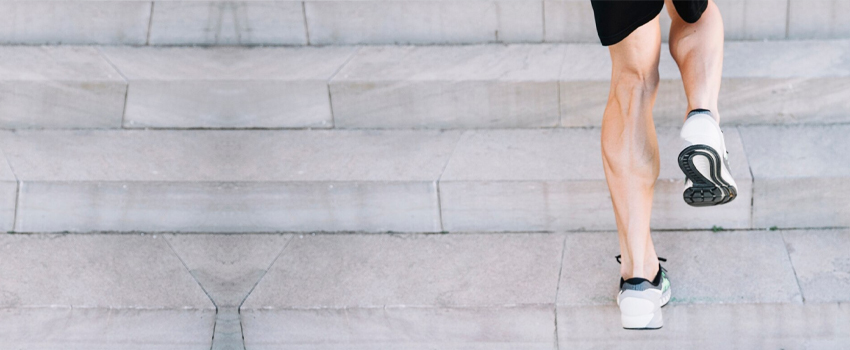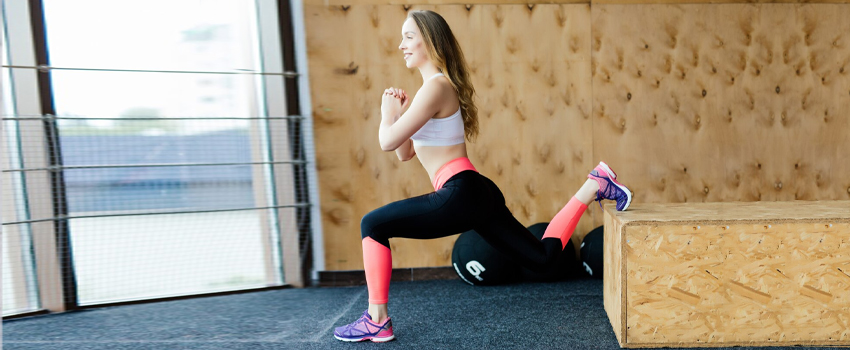Pain when walking is highly discomforting and can impact your quality of life. It may be a sign of a vascular condition such as peripheral artery disease, claudication, deep vein thrombosis, and diabetes.
The pain usually presents in your calves, ankles, thighs or hips. Fortunately physical activity can be helpful in easing the aches and preventing the causative conditions. Below is an overview of effective stretching as well as strengthening exercises to prevent pain while walking.
Stretching Workouts
Stretching your muscles improves blood circulation, reduces stiffness and also improves flexibility. These helps alleviate walking pain. It is recommendable to perform the following stretching movements 2 to 3 days a week for better results.

1. Calf Towel Stretch
Start by sitting on the floor and extend your legs out in front of you. Place a towel around the balls of your feet. While keeping your back and knees straight, pull the towel gently such that your toes point towards you. Hold this position for around thirty seconds before releasing.
2. Hamstring and Ankle Stretch
In order to do this exercise, sit on the ground with your legs out in front of you. Bend at your waist to stretch forward, sliding your hands on the ground toward your feet.
Ensure you keep your back long and chest open. At the same time, bend your toes towards your body. Hold this pose for 30 seconds before returning to the point of starting.
3. Toe Touch
Place your left leg on a bench or railing, making a 90 degree angle with your right leg. Lean forward and touch the toes on your left leg. Ensure you keep your right leg straight. Switch legs and perform the same kind of stretching. Repeat the exercise 5 times.
4. Hip Flexor Stretch
Lunge forward with your right leg bent at the knee. You can bend your left leg slightly or keep it straight. Push your hips forward until you feel a stretch on your thigh near the groin.
Keep your torso upright and your right knee behind your toes. Hold this position for about 30 seconds and repeat with your left leg leading.
5. Shin Stretch
Start by kneeling on the floor and point your toes, so the soles of your feet are facing the ceiling. Sit back on your heels gently until you feel a slight stretch down the side of your shins. Hold this position for 30 seconds.
Strengthening Exercises
Strength building workouts help prevent and rehabilitate ailments that cause pain when walking. Building up your muscles and tendons allows them to handle greater loads and makes them more resilient.
Strength training also helps reduce your pain tolerance. The following exercises can help you build lower limb strength to ward off walking pain.

Calf Raises
Calf raises are an effective leg strengthening workout to manage walking pain. Find a low secure step that allows you to lower your heels below your toe line. Stand on the step with your feet shoulder width apart and your heels hanging over the edge.
Slowly lower your heels below your toe level and hold this position for about 2 seconds. Raise yourself until the balls of your feet are above your toe line. Repeat this exercise 5 times, resting one minute between each set.
Split Squats
Stand about three feet in front of a chair with your back facing it. Put your left foot on the chair behind you and bend your right leg slightly. Place your weight on your right leg and lower yourself down slowly. Your left leg should help you balance.

Go down until your right thigh is parallel to the floor. Hold this pose for 2 seconds then return to the starting position. Perform 5 reps then switch to your left leg and repeat. Ensure you rest for 2 minutes between each set.
Conclusion
Combining exercise with lifestyle changes and proper treatment can prevent the progression of vascular diseases and improve symptoms such as walking pain. Physical activity offers multiple benefits including reduced limb symptoms and mobility improvement.
If you experience no improvements or your symptoms worsen then you should consult a cardiovascular expert. The experts at Washington Vascular Specialists will examine your leg, diagnose and treat the underlying condition. Feel free to contact us or book an appointment.



